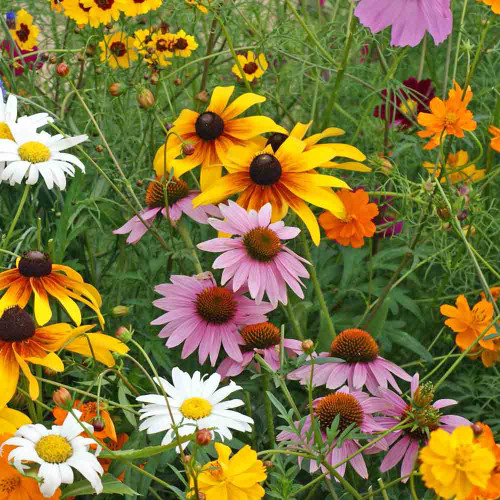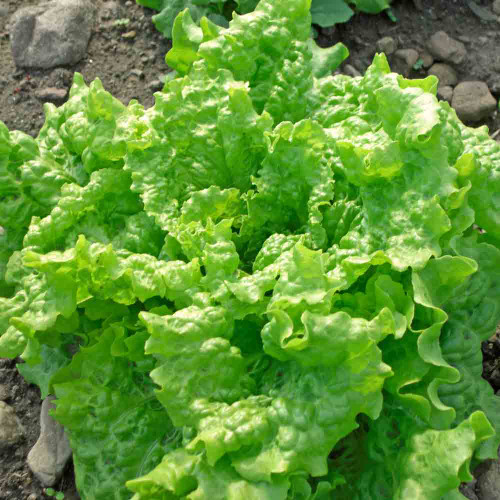Description
Catnip - The Guardian for Your Garden
Watching a cat mesmerized by catnip is delightful, but if that is all you know about this simple, hardy perennial, you’re missing some of its strongest benefits. We've come to appreciate it as one of the garden's most surprising and powerful allies. The very same aromatic compound, nepetalactone, that famously enchants cats also acts as a potent repellent for a host of unwelcome garden pests, including mosquitoes, aphids, and squash bugs. At the same time, its long bloom time makes it a magnet for beneficial insects and wildlife. On top of all that, its other well-known use as a traditional calming herbal tea with a pleasant, minty flavor feels like the icing on the cake.
Details
Catnip, a member of the mint family, is a hardy herbaceous perennial known for its vigorous growth and remarkable aromatic qualities. It typically forms an open, mounded clump reaching 2 to 3 feet tall and wide. Its square stems, characteristic of the mint family, are covered in fine, downy hairs which give the plant a soft appearance. The leaves are heart-shaped or triangular with distinctly toothed edges and are arranged oppositely on the stems. They are soft to the touch due to their hairy surface, which imparts a characteristic gray-green hue.
The entire plant, particularly the leaves when bruised or crushed, is highly aromatic. The scent is complex and mint-like, often with almost camphor-like with hints of thyme, sage and mint. The flowers, borne in dense spikes from late spring through fall, possess a subtle beauty; they are small, tubular, and two-lipped, generally white to pale lavender with distinctive purple or reddish spots. As a hardy perennial, Catnip is well-suited for USDA Zones 3-9.
History
Catnip’s story is interwoven with human history across continents. Native to southern Europe, the Middle East, and parts of Asia, its genus name, Nepeta, is believed to derive from Nepete, an ancient Etruscan city in Italy where the herb was widely cultivated. The Romans, who valued it, are credited with spreading it through northern Europe. Long before Chinese teas were common, catnip tea was a popular, soothing beverage in medieval Britain. European settlers brought this cherished herb to North America in the 1800s, where it so thoroughly naturalized that some considered it native by the 1840s. Its variety of names—including "catmint," "catswort," and "field balm"—reflects its long journey and enduring place in gardens worldwide.
Uses
Catnip offers a surprising range of uses beyond its most famous application. For humans, the leaves and flowers can be brewed into a traditional calming herbal tea with a pleasant, minty flavor. Fresh young leaves can also be used sparingly, chopped into salads or sauces for a unique aromatic note.
Of course, its most well-known use is for feline enrichment. The compound nepetalactone induces a temporary state of playful euphoria in the roughly two-thirds of cats that are genetically responsive. Fresh or dried leaves can be used in toys or sprinkled in play areas to provide a safe and stimulating treat for your whiskered companions.
In the garden ecosystem, Catnip serves as a powerful ally. Its strong, complex aroma acts as a natural repellent for a variety of common garden pests, such as mosquitoes, aphids, squash bugs, and flea beetles. The plant is also generally unpalatable to deer and rabbits, a significant advantage in many gardens.
Companion Planting
In the garden, Catnip plays two starring roles: a faithful guardian and a bustling hub for beneficial life. As a guardian, its strong scent can help protect more vulnerable plants by confusing or deterring pests. It is traditionally planted near brassicas (like cabbage and broccoli), squash, and tomatoes to help ward off aphids and flea beetles.
A magnet for beneficial insects and wildlife, Catnip's nectar-rich flowers provide a significant draw for various pollinators throughout its long bloom period, including honeybees, bumblebees, native bees (like leaf-cutting and long-horned bees), and butterflies. It also serves as a host plant for the larvae of both the Hermit sphinx moth and the False crocus geometer moth. If flower heads are left to set seed, birds like goldfinches may visit for a meal.
Planting and Growing Tips
Catnip is a famously easy-to-grow and resilient perennial, but it has one non-negotiable requirement: well-drained soil. It is intolerant of "wet feet" and can suffer from root rot in soggy conditions, especially over winter. It thrives in full sun but is also quite tolerant of partial shade - especially afternoon shade in hotter climates - making it adaptable to various spots in your garden.
Starting seeds indoors 6-8 weeks before your last frost is a reliable method. Sow the tiny seeds shallowly (about 1/8 inch deep) or simply press them onto the surface, as they may benefit from light for germination. Keep soil consistently moist and warm (60-75°F). Germination can be slow and uneven; patience is key. Transplant hardened-off seedlings into the garden after the last frost, spacing them 12-24 inches apart. Alternatively, seeds can be sown directly into the garden. Wait until all danger of frost has passed and the soil has warmed, then sow seeds shallowly and keep the area consistently moist until germination.
Once established, Catnip is quite drought-tolerant and generally requires no supplemental fertilizer. To maintain a tidy, bushy shape and encourage reblooming, shear the plant back by about a third after its first major flush of flowers. Because it can spread vigorously by self-seeding, deadheading spent flowers is recommended if you wish to control its spread. Catnip is also an excellent choice for container gardening, which helps manage its spreading habit even if you live in a colder zone where it can be more easily protected or brought indoors for the winter. A pot at least 12 inches deep with good drainage is recommended. Note: It's wise to protect young seedlings from enthusiastic feline admirers with a small wire cage until the plants are well-established.
Harvesting Tips
Harvest catnip for drying when it's in full bloom, typically in mid-summer, as this is when the concentration of aromatic oils in the leaves is at its peak. It's best to harvest on a dry, sunny day, after any morning dew has evaporated. Cut the top one-third to one-half of the stems, including leaves and flowers. You can typically get at least two good harvests per season. Bundle the harvested stems and hang them upside down in a cool, dark, well-ventilated area to dry. Once the leaves are crisp, strip them from the stems and store them in a sealed airtight container away from light and heat to preserve their potency.
Learn More
From the soil to the seed to the food you eat - we'll help you grow your best garden!

















